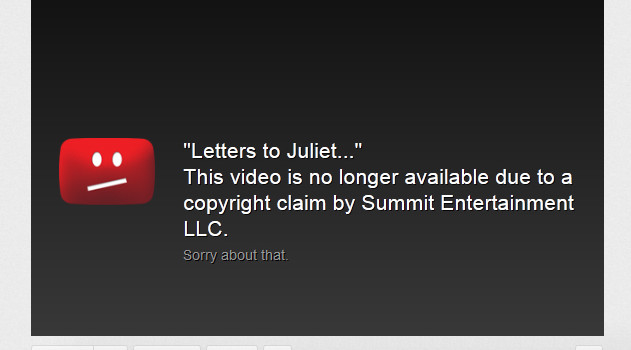The 2012 Canadian copyright reform law featured several “made in Canada” provisions that the Conservative government touted as striking a better balance than rules found elsewhere. At the top of the list was the notice-and-notice system for Internet providers. Minister James Moore (then of Canadian Heritage and later Industry) specifically cited the Canadian system as an example of how Canada had “rejected the American style approaches on massive parts of our legislation.” Yet a close reading of the leaked version of the Trans Pacific Partnership intellectual property chapter suggests that Canada may just have agreed to establish a copyright takedown system.
The preservation of the notice-and-notice was a top copyright priority for the Canadian government, so much so that it caved on copyright term extension and implemented digital lock rules that were widely criticized by the Canadian public. However, the negotiators may have failed to keep a notice-and-takedown system out of Canada. Section I of the copyright chapter creates a U.S. style notice-and-takedown system. The Canadian solution was to create a special annex that provides an alternative to the U.S. approach. While the annex was designed specifically for Canada, it would appear that it fails to prevent copyright takedowns from coming to Canada.
The problem stems from the following requirement in the annex, which requires a country to:
induce Internet Service Providers carrying out the function referred to in paragraph 2(c) to remove or disable access to material upon becoming aware of a decision of a court to the effect that the person storing the material infringes copyright in the material.
This is an obvious takedown and content blocking provision. If it applies simply to a standard Internet provider, it would mandate content blocking upon becoming aware of a court decision that the content infringes copyright. Note that the court decision does not need to be a Canadian court. This means that another court could rule on the legality of the content based on its domestic copyright law and the Canadian provider would still be required to remove or disable access. Content that is perfectly legal in Canada (e.g. qualifies for fair dealing or is non-commercial user generated content) could therefore still be blocked or taken down based on the application of foreign copyright law. The “made in Canada” approach would be lost.
The implications of this provision go even further, however. The reference to paragraph 2 (c) refers to instances where content is stored or controlled by a network provider. This language comes from the U.S. DMCA and applies to a wide range of companies such as YouTube, Facebook, Flickr, and Dropbox. In a Canadian context, it would apply to Shopify, Hootsuite, and many other well known Canadian Internet companies. In other words, all of those companies now face a Canadian takedown system through the TPP based merely on being made aware of any court decision. Note that this Canadian takedown system is even worse than the U.S. approach since there is no counter-notification or “put-back” mechanism.
Moreover, there is an argument that the entire U.S. notice-and-takedown system will actually apply in Canada through the TPP. The annex for Canada comes with the following condition:
In order to facilitate the enforcement of copyright on the Internet and to avoid unwarranted market disruption in the online environment, paragraph(s) 3-4 shall not apply to a Party, provided that, if upon the date of agreement in principle of this Agreement, it continues to:
This condition – which requires a country to have the full system described in the annex in place upon the date of agreement in principle – was aimed at limiting the alternative approach to Canada since other countries could not create a Canadian-style system and use that approach to comply with the TPP.
The problem is that Canada does not comply at the date of agreement in principle (which has essentially passed). The Canadian government has not “induced” Internet providers to remove or disable content based on awareness of court decision. In fact, it has done the opposite, promoting the fact that Canada does not have a takedown system. Given that Canada does not comply with the annex on the date of agreement in principle, it would appear that the annex cannot be used and that the U.S. DMCA notice-and-takedown approach is coming to Canada.
There are clearly several possible interpretations of the Internet provider provisions which bring a copyright takedown system to Canada without the involvement of Canadian courts and potentially without the application of Canadian copyright law. This runs counter to longstanding government commitments and represents a significant change to copyright and the Internet in Canada through the TPP.








Pingback: Conservatives have been a disaster on technology issues - AlphaBeatic
Would it be possible for this provision to be interpreted to mean a Canadian court? Doesn’t the idea that Canadian ISPs would be bound by the court decisions of other countries must defy other more fundamental legal principles?
Pingback: The TPP, Internet Censorship, and Trudeau's First Big Test as Prime Minister | NewZSentinel
Pingback: What the Internet Needs vs. What the TPP Demands » infojustice
Pingback: Michael Geist: TPP Text Confirms Massive Loss to Canadian Public Domain
Pingback: TECNOLOGÍA » Official Release of TPP Text Confirms Massive Loss to Canadian Public Domain